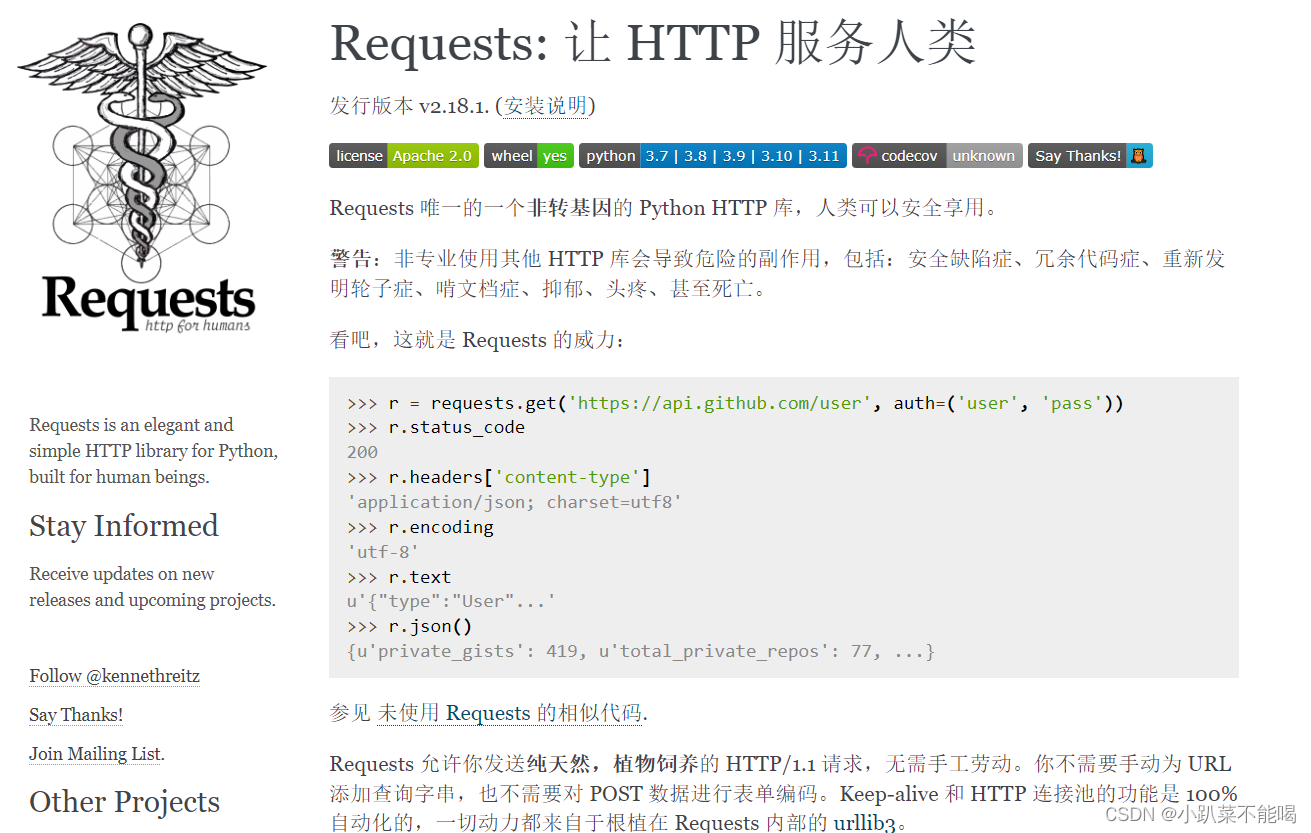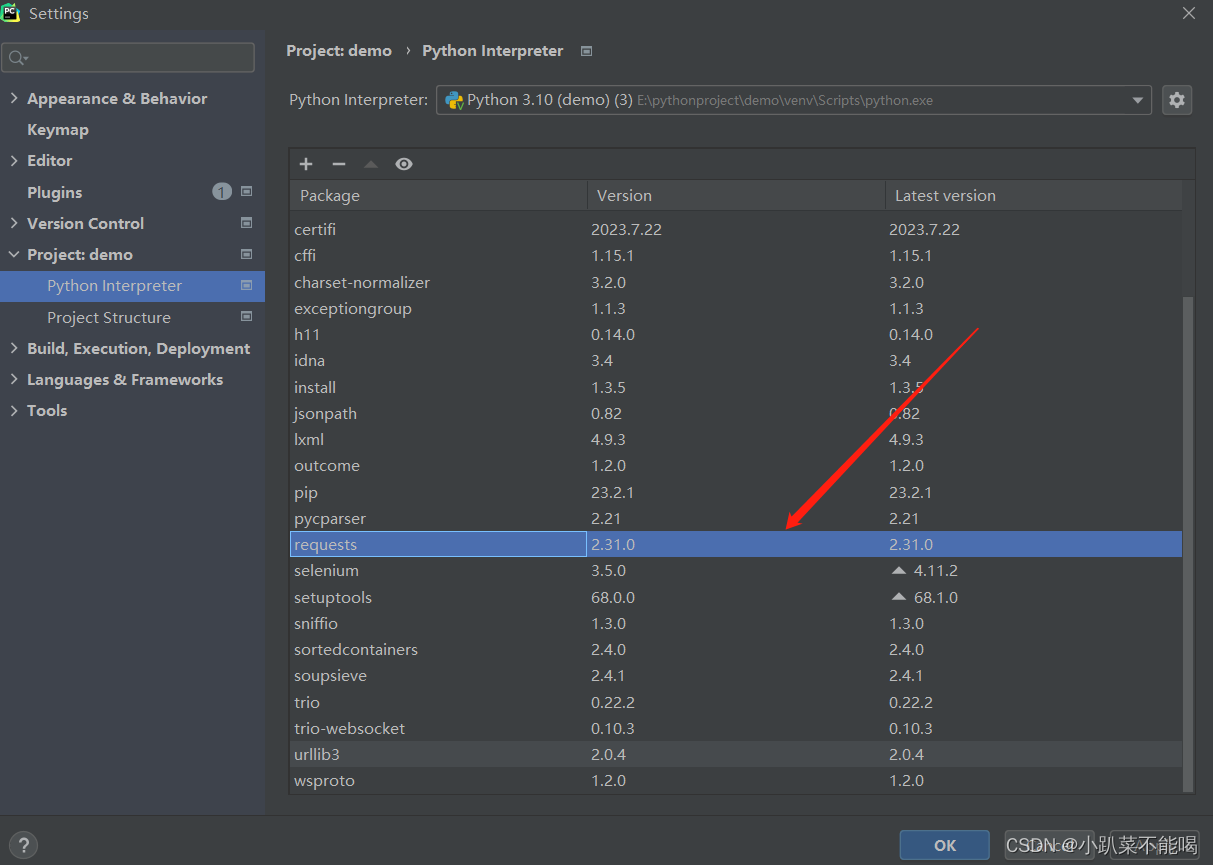Requests概述
官方文档:http://cn.python-requests.org/zh_CN/latest/,Requests是python的HTTP的库,我们可以安全的使用

Requests安装
pip install Requests -i https://pypi.tuna.tsinghua.edu.cn/simple
Requests的使用
Respose的属性
| 属性 | 说明 |
|---|---|
url | 响应的URL |
text | 响应的内容 (unicode码) |
json() | 如果响应的结果是一个json对象,可以调用该方法,否则会报错 |
content | 返回响应的内容(字节的形式) |
status_code | 响应代码,其中200表示响应成功,404表示Not Found等等 |
Requests GET请求
requests.get()函数将会返回服务器的响应
import requestsheaders = {"user-agent": "Mozilla/5.0 (Windows NT 10.0) AppleWebKit/537.36 (KHTML, like Gecko) Chrome/40.0.2214.93 Safari/537.36"}
params = {"spm":"1001.2014.3001.5502"}
url = "https://blog.csdn.net/qq_42103091/article/details/123287865"response = requests.get(url=url, params=params, headers=headers)
# 响应的URL
print(response.url)
# https://blog.csdn.net/qq_42103091/article/details/123287865?spm=1001.2014.3001.5502
# 状态码
print(response.status_code)
# 200
Requests POST请求
倘若需要向服务器上传数据,一般采用POST请求。常见的应用场景为提交HTML表单。
POST请求中的Content-Type用来指示请求正文的数据类型,而Content-Length则指示了请求中的数据长度
requests.post(url, data, json, headers, proxies, timeout, vertify)
# 参数说明
"""
url: 请求的URL
data: 发送给指定URL的字典、元组列表、字节或文件对象
json: 发送给指定URL的JSON对象
headers、proxies、timeout、vertify: 与get()方法同
"""
发送请求
import requests
import jsonurl = "https://httpbin.org/post"data = {"comments": "ceshi", "custemail": "ceshi.com", "custname": "ceshi", "custtel": "ceshi", "delivery": "17:30", "size": "large", "topping": "onion"
}response = requests.post(url=url, data=data)
print(response.status_code)# 200
with open("temp.json", "w", encoding="utf-8") as fp:json.dump(response.json(), fp, ensure_ascii=False)










)








